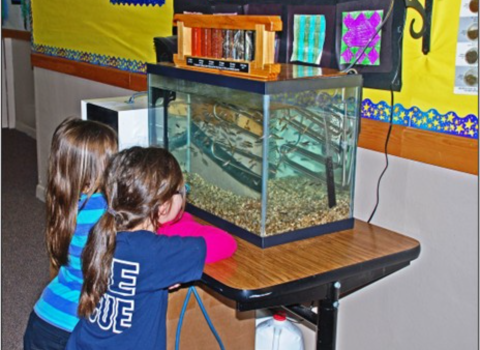On March 4, the U.S. Fish and Wildlife Service announced a public comment period for a draft environmental assessment and restoration plan (EA/plan) to restore Tobico Marsh, a 900-acre wetland near Bay City, Michigan. A public meeting to discuss the EA/plan was held at Bay City State Recreation Area on March 10. The draft EA/plan was announced as being available on the Service’s website and comments could be made in several formats.
A court order issued on March 15, 2004 has made the Service’s internet sites and electronic mail connections unavailable for the immediate future. Printed copies and electronic copies on CDs of the EA/plan are still available at:
Bay City State Recreation Area Office and Visitor Center
3582 State Park Drive
Bay City, MichiganU.S. Fish and Wildlife Service East Lansing Ecological Services Field Office
2651 Coolidge Road, Suite 101
East Lansing, MI 48823
Copies of the draft EA/plan can also be obtained by contacting the Services East Lansing Ecological Services Field Office at (517) 351-2555. Comments on the draft may be sent to Lisa Williams, U.S. Fish and Wildlife Service, 2651 Coolidge Road, Suite 101, East Lansing, MI 48823. Comments may also be faxed to 517-351-1443. If anyone sent e-mail comments on or after March 15, 2004, they should be printed out and either mailed or faxed. The closing date for commenting has been extended from April 9 to April 16, 2004 because of the problems. We are sorry for the inconvenience.
The draft EA/plan outlines a variety of alternatives that might be used to restore the hydrology of Tobico Marsh. The proposed alternative includes automating the flap gate at Tobico Lagoon, improvements to existing culverts under Parish Road, and installation of additional culverts under Parish Road and Boutell Road. This alternative is designed to improve water flow through the marsh, increase fish movement between the marsh and bay, and reduce the cost of pumping water from Hadd Drain to Saginaw Bay. This EA/plan would use funds received from a settlement for damages to natural resources resulting from contamination in the Saginaw River and Bay.
The U.S. Fish and Wildlife Service is the principal Federal agency responsible for conserving, protecting and enhancing fish, wildlife and plants and their habitats for the continuing benefit of the American people. The Service manages the 95-million-acre National Wildlife Refuge System, which encompasses 544 national wildlife refuges, thousands of small wetlands and other special management areas. It also operates 69 national fish hatcheries, 63 Fish and Wildlife Management offices and 81 ecological services field stations. The agency enforces federal wildlife laws, administers the Endangered Species Act, manages migratory bird populations, restores nationally significant fisheries, conserves and restores wildlife habitat such as wetlands, and helps foreign governments with their conservation efforts. It also oversees the Federal Assistance program, which distributes hundreds of millions of dollars in excise taxes on fishing and hunting equipment to state fish and wildlife agencies.


